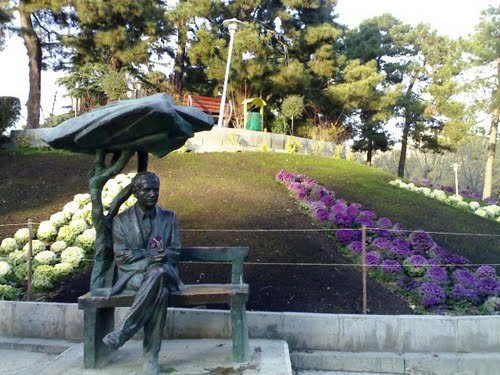Karim Saei, the father of modern forestry in Iran
TEHRAN – Karim Saei was the first person who made great efforts to pass the Forestry Law to save Iran's forests from looting by invaders.
He was born in 1910, in Mashhad, northeastern Iran, where he got his diploma. He left behind his homeland for Karaj city to study at the Faculty of Agriculture of Tehran University. He passed his course very successfully and received his B.Sc. degree in 1931 followed by a scholarship to study for 2 years at Agronomic Institute in Montpellier, France.
He graduated M.Sc. with an excellent grade. Due to his brilliance during his study in France, Revue de Bois magazine published an article about him, naming him a genius.
Back to back with his study in France, he was granted another scholarship to study Forest statistics at the University of California, Berkeley.
He received his second M.Sc. in 1937 and returned back with a treasure of knowledge to serve his country. Soon he was recruited by the Ministry of Agriculture. He founded Forest Office as the first body for forest management in Iran within the Directorate of Agriculture in 1938. Very soon, he became the head of the Forest Office.
His attempts to found Forestry Bureau resulted in 1940 but still he believed that forests should be attached more attention and later on Directorate of Agriculture transformed to Ministry of Agriculture in 1941 and Forestry Bureau converted to Directorate of Forestry and 4 regional forestry offices established, respectively in northern cities of Gilan, Tonekabon, Mazandaran, and Gorgan under the supervision of Directorate of Agriculture in 1942. In 1949, he became the chair of Forest Corporation.
Saei in collaboration with his colleagues formulated the forest act and delivered it to the parliament for ratification. He also suggested to the Dean of the Faculty of Agriculture of Tehran University to offer forestry, soon he started working there as the lecturer. The first estimate of forest area was also given by him in 1946.
Among Tehran's parks, Saei Park is one of the oldest urban spaces, a park that dates back to 5 decades ago.
Saei Park and Vali-e-Asr Street in Tehran and their unique trees are two of his unforgettable and lasting works. He believed that in the next few years, residential and industrial areas would develop and trees would serve as the lungs of polluted cities.
Vali-e-Asr Street with its 70-year-old trees and Saei Park were just a small part of Karim Saei's services for the well-being of Tehrani citizens. He considered the welfare of the society in the comfort of individuals and respecting the rights of citizens and was the first person to develop urban green space in Tehran.
Vali-e-Asr Street still shines as a valuable monument of Saei next to the Champs Elysees in Paris and Hyde Park in London and shows the historical identity of Tehran to the world. The plane trees that he planted on both sides of the Street made the capital's longest street one of the most beautiful streets in Iran and the world in a short time.
Saei has been called the father of Iran's forestry, but today, 68 years after his death, few people and officials are still aware of his valuable services.
Finally, Saei died on the way back from a research mission from Shiraz to Tehran due to a plane crash on December 25, 1952. At his own will, he was buried in the Faculty of Natural Resources, University of Tehran, where he was once a student and once a faculty member.
Courtesy of Tehran Times



Your Comment :